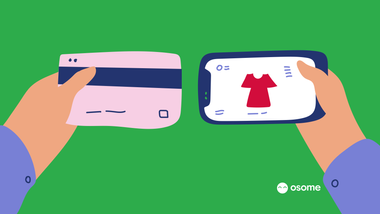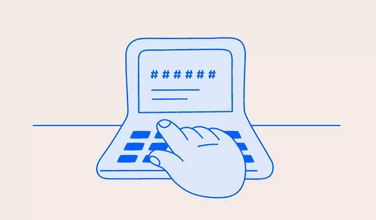How UK Ecommerce Owners Wrongly Account for Cost of Goods Sold
Are you trying to understand why your ecommerce cost of goods sold is too high? If you are struggling to know how to calculate this to find whether there are any mistakes, this article can help you find a solution.

As you’re attempting to do accounting for your small business, are you trying to understand why your ecommerce cost of goods sold is too high? Do you find it difficult to calculate cost of goods sold? If you are struggling to know how to calculate this to find whether there are any mistakes, this article can help you find a solution.
Ecommerce in the UK
Choosing to be a UK ecommerce owner might be one of the smartest decisions that you have made so far. With the growth of technology, we have seen how artificial intelligence and machine learning have helped businesses in general. This has brought remarkable changes to people’s lives and has transformed their habits and lifestyles.
For example, many people prefer to do online shopping instead of going to the shopping centre and buy what they need. Especially after the Covid-19 pandemic and the inevitability of lockdowns, people have tended more towards online shopping. So, you certainly have made a great decision!
Taking a look at ecommerce in the UK, we can find some admirable statistics. According to Statista:
- The United Kingdom appeared to have Europe's biggest B2C ecommerce market in 2019.
- UK consumers spent 200 billion euros on online purchases
- By now a mature market, UK ecommerce sales reached a value of 693 billion British pounds in 2019.
So, if your cost of goods sold is high and you cannot make your desired profits, it is highly likely not because of the economical situations of the UK or the negative growth rate. Rather, you may have some problems identifying how to account for the cost of goods sold.
What Does Cost Of Goods Sold Mean?
An ecommerce business’s cost of goods sold is the amount of money spent in a certain period to make and sell the company's goods. The cost of goods sold might be much easier or much more complex to calculate depending on the type of business. The smaller your business, the easier it is to calculate the cost of goods sold, and the less qualitative analysis is required.
The cost of goods sold is stated on your income statement and is deducted from gross income when calculating it. A prospective investor may look at the income statement and consider a high cost of goods sold as a major reason why the company's profit isn't as great as it could be, and refuse to invest accordingly. However, a more controllable cost of goods sold would aid in the development of a more sustainable economy.
How Do UK Ecommerce Owners Wrongly Account for Costs of Goods Sold?
So, let’s review the most common mistakes that UK ecommerce owners make when accounting cost of goods sold.
Not Considering Both Direct and Indirect Costs
As a UK ecommerce owner, when you want to calculate the cost of goods, you should make sure to consider both direct and indirect costs. The reason is that they both comprise the total cost of goods.
But what are direct and indirect costs?
Your guess based on the names is right. Direct costs are those that are directly associated with the goods while indirect costs are not.
Here are the examples of direct costs:
- Raw materials
- Inventory costs of the goods
- The supplies costs
- Packaging costs
- The supplies for production
- Overhead costs, including utilities and rent
And here are some of the examples of indirect costs:
- Labor
- Technical equipment and tools
- Storage costs
- Administrative salaries
If you do not consider all of these costs, your cost of goods sold will not be accurate. So, you need to employ an experienced accountant to make sure if you are calculating correctly and accurately.
If the total cost of goods sold is too high, you should look for the reason in one of the elements that comprise the total costs. To lower your cost of goods sold, you can go remote and use anoffice management software so that you do not pay overhead costs. You can also use a co-working office if going remote is not possible for your ecommerce business. Employees spending too much time on meetings both virtual and direct adds to indirect costs, you could switch to an asynchronous video communication tool to boost productivity and efficiency amongst employees.
Not Considering Both Direct and Indirect Costs
Regardless of what you sell on your ecommerce website, either physical or digital, you should never ignore the amount of inventory you start and end the year with, in accounting cost of goods sold.
At the beginning and end of each year, it's important to keep track of all your inventory. Your inventory contains all raw materials, any goods that have been started but not completed, and other supplies, in addition to the finished goods in stock and ready for resale.
Both your beginning inventory and your ending inventory must line up exactly for accounting and reporting purposes; otherwise, you have to look for a clear explanation. If the business owner would like to know exactly how much they made during a specific period, without accurate inventory information at the end of that period, the cost of goods sold won't be accurate.
How to Account for Cost of Goods Sold?
So, now that you know the metrics that are important in calculating the cost of goods sold, this is the formula that shows you how to calculate the cost of goods:
Cost of Goods Sold = Initial inventory + purchases and other costs - ending inventory
However, accounting for cost of goods sold is not as easy as it seems in this formula. Each metric, as we said earlier, includes several important elements. If you ignore any element, the calculated cost of goods sold would be far from reality. Therefore, it is very crucial to recruit an accountant. You can also automate the accounting tasks of your ecommerce business and use office management software or accounting software.
Pick an Overall Accounting Approach
You cannot use the same cost of goods sold for several years. And it is obvious because the prices are never fixed and are always fluctuating. That means the value of all the goods in your warehouse varies based on when they were bought or manufactured. So, every year, you should account for the cost of goods sold. Here, we will introduce three choices for you to choose an overall accounting approach:
FIFO
FIFO (First-In, First-Out) strategy assumes that the oldest inventory units are always sold first.
LIFO
LIFO (Last-In, First-Out) strategy is the opposite of FIFO. It assumes that the newest inventory is sold prior to the oldest.
Average Cost
Average cost strategy entails calculating an average cost for each unit of inventory sold.
Conclusion
If you are a UK ecommerce owner who wrongly accounts for the cost of goods sold, you should take time and understand what is going on in your company. If any of the elements that play an important role in your cost of goods is neglected or overestimated, the result would have consequences for you. You should either pay high taxes or suffer revenue loss. To avoid this, make sure that you use well-trusted accounting software or hire an expert accountant who knows ecommerce. We wish you the best of luck!
Osome Partner
This article was contributed by Nifty an all in one workflow automation platform helping thousands of teams across the globe manage their projects more efficiently.






